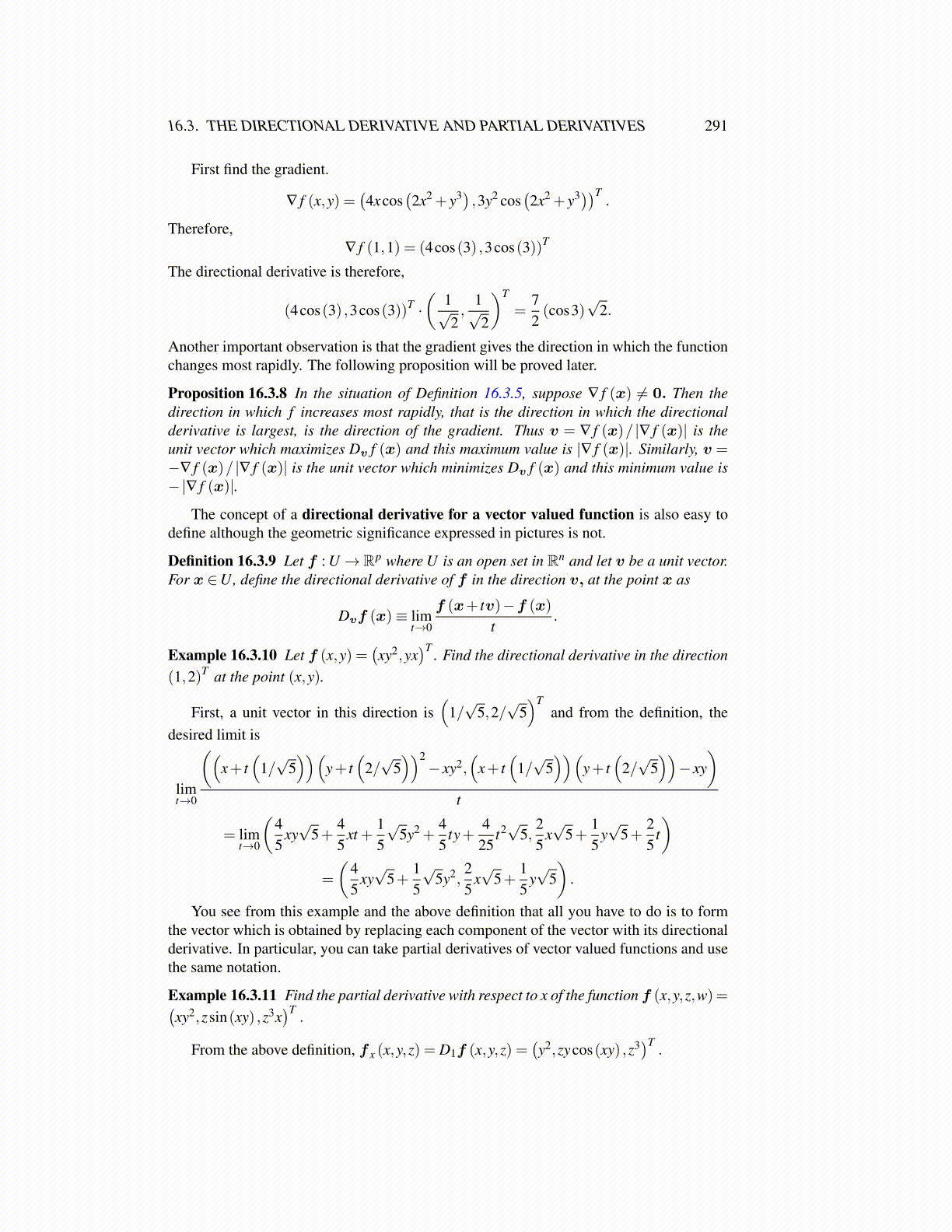
16.3. THE DIRECTIONAL DERIVATIVE AND PARTIAL DERIVATIVES 291
First find the gradient.
∇ f (x,y) =(4xcos
(2x2 + y3) ,3y2 cos
(2x2 + y3))T
.
Therefore,∇ f (1,1) = (4cos(3) ,3cos(3))T
The directional derivative is therefore,
(4cos(3) ,3cos(3))T ·(
1√2,
1√2
)T
=72(cos3)
√2.
Another important observation is that the gradient gives the direction in which the functionchanges most rapidly. The following proposition will be proved later.
Proposition 16.3.8 In the situation of Definition 16.3.5, suppose ∇ f (x) ̸= 0. Then thedirection in which f increases most rapidly, that is the direction in which the directionalderivative is largest, is the direction of the gradient. Thus v = ∇ f (x)/ |∇ f (x)| is theunit vector which maximizes Dv f (x) and this maximum value is |∇ f (x)|. Similarly, v =−∇ f (x)/ |∇ f (x)| is the unit vector which minimizes Dv f (x) and this minimum value is−|∇ f (x)|.
The concept of a directional derivative for a vector valued function is also easy todefine although the geometric significance expressed in pictures is not.
Definition 16.3.9 Let f : U → Rp where U is an open set in Rn and let v be a unit vector.For x ∈U, define the directional derivative of f in the direction v, at the point x as
Dvf (x)≡ limt→0
f (x+ tv)−f (x)
t.
Example 16.3.10 Let f (x,y) =(xy2,yx
)T . Find the directional derivative in the direction(1,2)T at the point (x,y).
First, a unit vector in this direction is(
1/√
5,2/√
5)T
and from the definition, thedesired limit is
limt→0
((x+ t
(1/√
5))(
y+ t(
2/√
5))2− xy2,
(x+ t
(1/√
5))(
y+ t(
2/√
5))− xy
)t
= limt→0
(45
xy√
5+45
xt +15
√5y2 +
45
ty+4
25t2√
5,25
x√
5+15
y√
5+25
t)
=
(45
xy√
5+15
√5y2,
25
x√
5+15
y√
5).
You see from this example and the above definition that all you have to do is to formthe vector which is obtained by replacing each component of the vector with its directionalderivative. In particular, you can take partial derivatives of vector valued functions and usethe same notation.
Example 16.3.11 Find the partial derivative with respect to x of the function f (x,y,z,w)=(xy2,zsin(xy) ,z3x
)T.
From the above definition, f x (x,y,z) = D1f (x,y,z) =(y2,zycos(xy) ,z3
)T.